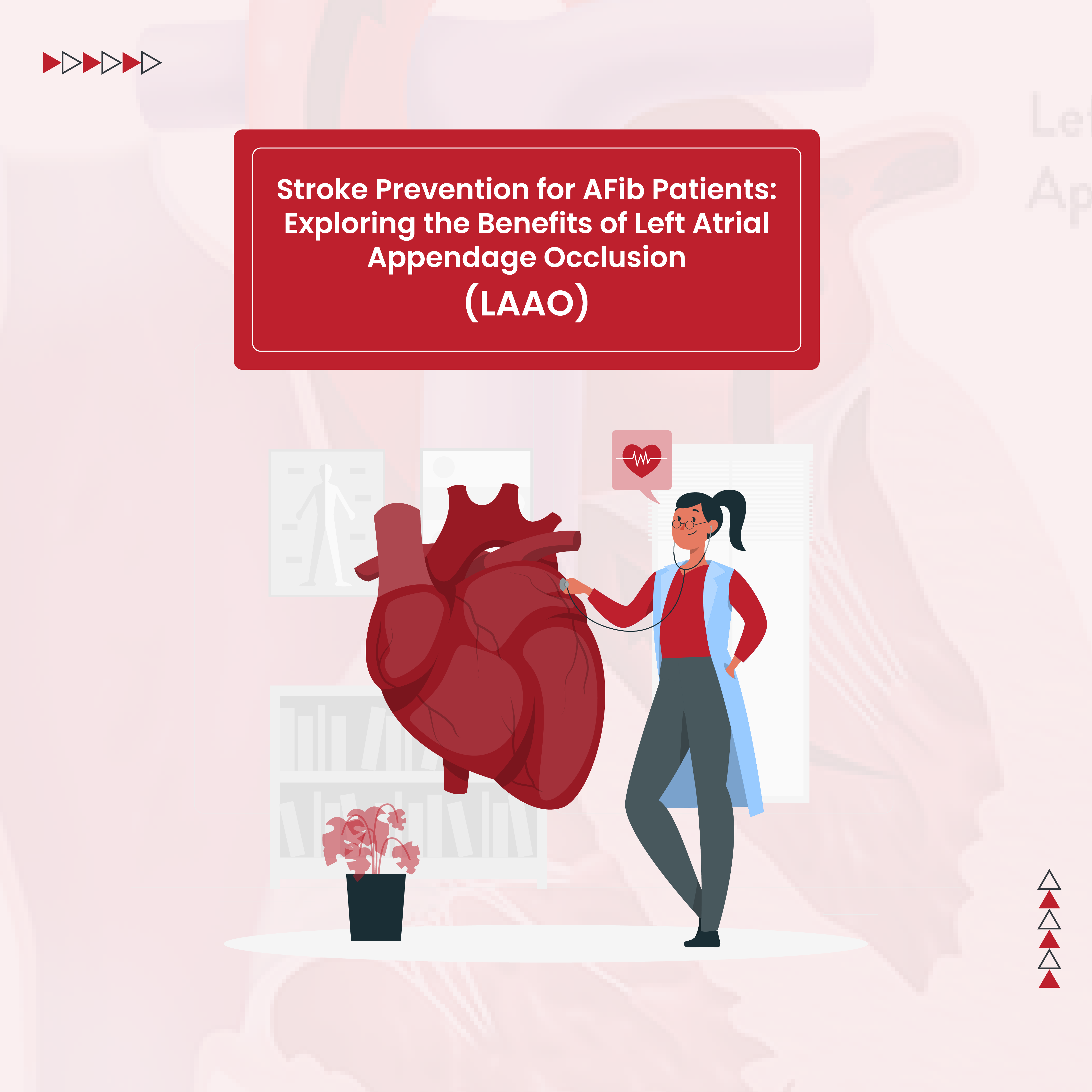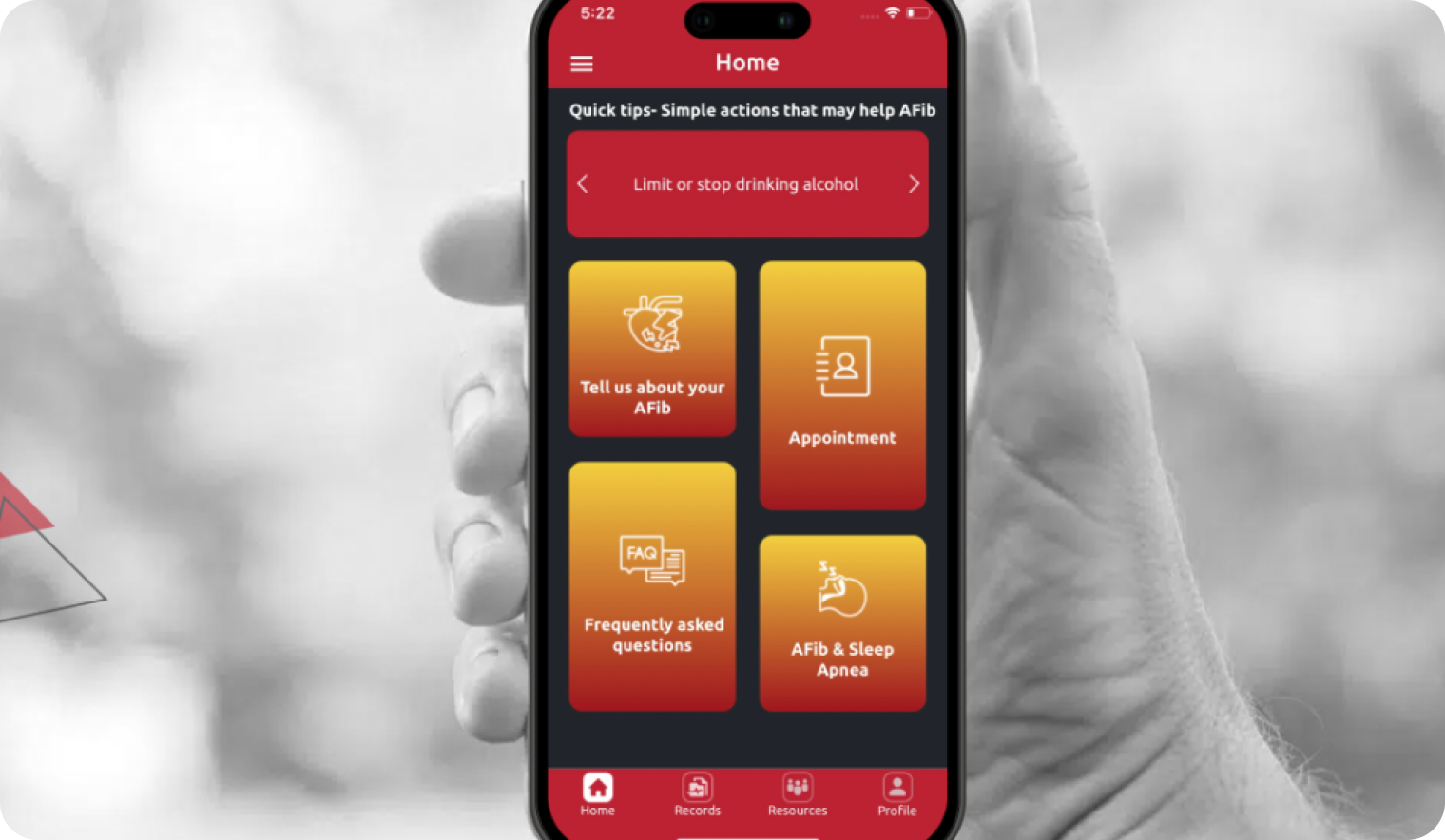Catheter ablation is a treatment to stop the irregular and chaotic heart rhythm of atrial fibrillation (AFib). During an AFib ablation, heat (radiofrequency) or cold (cryoablation) energy is delivered to the heart tissue to create areas of scar that interrupt the abnormal electrical pathways that cause the atrial arrhythmia. Radiofrequency (RF) ablation for AFib was first performed decades ago but was previously only recommended after other AFib treatments had failed.
Cryogenic (freezing) ablation technology and the cryoablation catheter are newer when compared to the radiofrequency ablation catheter and technology. There are pros and cons when comparing cryoablation vs radiofrequency ablation but ultimately, advances in technology and procedural experience have made both cryoablation and radiofrequency catheter ablation safe and effective treatment options for symptomatic atrial fibrillation.
What is Catheter Ablation and Is Catheter Ablation Invasive?
Catheter ablation is a minimally-invasive procedure to treat atrial fibrillation during which electrically abnormal tissue on the inside of the heart is ablated. Catheter ablation is typically performed by an electrophysiologist. An electrophysiologist is a cardiologist who has received additional, specialized training in treating disorders, that cause abnormal heart rhythms, like atrial fibrillation and atrial flutter.
During a catheter ablation of atrial fibrillation, the electrophysiologist inserts small tubes called catheters into blood vessels in the groin, neck, or arm. The catheters are carefully guided to the heart and into the heart’s upper chambers (atria). An electrical map is made of the inside of the atria to identify areas of abnormal electrical activity. Freezing (cryoablation) or heat (radiofrequency energy) is then delivered to the electrically abnormal areas to create scar tissue that blocks the AFib signals and restores a normal heart rhythm.
Over 90% of AFib triggers are found in or near the pulmonary veins where they attach to the left upper chamber of the heart. Creating scar tissue and electrically isolating the pulmonary veins blocks the majority of abnormal electrical signals that cause AFib and is, therefore, a primary target for atrial fibrillation ablation.
Is Catheter Ablation Safe?
Catheter ablation is a safe and effective treatment of atrial fibrillation. While there are risks associated with any invasive procedure, catheter ablation for AFib is minimally invasive which helps minimize procedure-related risks. A meta-analysis of 15 studies that investigated the safety of catheter ablation for atrial fibrillation found that the overall risk of procedure-related complications is approximately 8% but the risk of serious complications is much lower and ranges from 0.1-3.3%.
Risks of atrial fibrillation ablation include:
- Bleeding complications and blood vessel damage
- Infection
- New arrhythmia (abnormal heart rhythm)
- Pericardial effusion (collection of fluid around the heart)
- Injury of the phrenic nerve
- Damage to the heart valves
- Slow heart rate which could require a pacemaker
- Narrowing of the veins that carry blood from the lungs to the heart (pulmonary vein stenosis)
- Damage to the esophagus (tube that connects the mouth to the stomach)
- Kidney injury from the dye used during the ablation procedure
- Stroke or heart attack
- Death in very rare cases
Treatment of atrial fibrillation is complex and often requires a combination of medications and/or procedures to effectively control heart rate, restore and maintain a normal heart rhythm, and prevent stroke. Multiple studies have shown that the risk of adverse events is similar whether atrial fibrillation is treated with antiarrhythmic drugs or ablation. This is significant because ablation has not been found to have more risks than antiarrhythmic medications despite ablation being an invasive procedure.
The overall safety of catheter ablation and the improved efficacy of ablation over medications in maintaining a normal heart rhythm has contributed to the evolution of the American College of Cardiology treatment guidelines on the management of atrial fibrillation.
Previously, catheter ablation was only recommended if multiple antiarrhythmic medications had been tried and failed to maintain a normal heart rhythm. However, because catheter ablation is a safe and effective treatment for AFib, the guidelines were updated in 2019 to include atrial fibrillation ablation as a first-line treatment option for some patients with symptomatic atrial fibrillation.
What Are the Two Types of Ablation?
There are two types of ablation for atrial fibrillation: catheter ablation and surgical ablation. Catheter ablation is most effective for treating paroxysmal (intermittent) atrial fibrillation. Because it is minimally invasive, catheter ablation typically has a significantly shorter recovery time when compared to surgical ablation.
Although surgical ablation is more invasive, it is more effective for the more difficult to treat persistent atrial fibrillation. Surgical ablation is the recommended option if a patient has atrial fibrillation and needs open-heart surgery for another reason, such as coronary artery bypass graft surgery or a valve repair/replacement.
Is Catheter Ablation the Same as Radiofrequency Ablation?
Catheter ablation does not necessarily mean the same as radiofrequency ablation. Catheter ablation describes how access to the heart was obtained. As described above, catheter ablation is not open-heart surgery and there are no cuts, incisions, or stitches on the chest. It is done via a minimally-invasive approach with the heart accessed via blood vessels, like the femoral veins. The ablation is performed solely on the tissue on the inside of the heart.
The term ‘radiofrequency ablation’ describes the type of energy used during the catheter ablation. Another type of catheter ablation is cryoablation.
What Is Radiofrequency Catheter Ablation?
Radiofrequency ablation delivers heat to the heart tissue to create scars that act as roadblocks to the abnormal electrical signals that cause atrial fibrillation. Over the years, a significant limitation of radiofrequency ablation of AFib was the high rate of atrial fibrillation recurrence which necessitated re-do or touch-up procedures.
The high re-do rate was due to the design of the irrigated radiofrequency catheter which creates point-by-point lesions of scar tissue using heat. However, the irrigation of the radiofrequency catheter for ablation interfered with the ability to get an accurate temperature which made it difficult to deliver the precise amount of energy needed to create repeated, durable points of scar tissue. When the points of scar tissue are not deep enough or close enough together, atrial fibrillation electrical pathways can reconnect around the scar tissue and lead to AFib recurrence.
This problem was addressed with the development of contact force-sense catheters which have sensors on the tip of the catheter to better gauge the temperature of the tissue being ablated. The contact force catheter has significantly improved the precision and efficacy of radiofrequency ablation in patients with atrial fibrillation.
What is Cryoablation?
Cryoablation uses a cryoballoon to deliver cold/freezing energy to create the scar tissue that prevents AFib. A significant difference between cryoablation and radiofrequency ablation is that the cryoballoon can conform to the anatomy of the pulmonary veins to create a continuous line of scar tissue.
When the scar tissue is continuous it is harder for electrical pathways to find a way to reconnect. In addition, there is no irrigation involved in cryoablation so the temperature monitoring is precise which contributes to a thicker, more durable scar. A continuous, thick, durable scar is the goal of ablation as it effectively stops abnormal electrical activity within the pulmonary veins from causing AFib.
What Are the Pros and Cons of Radiofrequency and Cryoablation?
Ablation is an important treatment option for helping people with AFib maintain a normal heart rhythm (sinus rhythm). Amongst people with atrial fibrillation, the presence of sinus rhythm has been associated with a 50% lower incidence of death. Ablation is not the only treatment option for maintaining sinus rhythm. Antiarrhythmic drugs are also widely used. The benefit of ablation vs antiarrhythmic drugs in the management of atrial fibrillation has been a topic of intense research.
Results of AFib ablation studies have shown the following benefits of catheter ablation (radiofrequency or cryoablation) for atrial fibrillation:
- Healthier heart. Treating AFib with ablation results in better cardiovascular outcomes. Ablation that is done early in the AFib disease process has also been shown to significantly lower the risk of heart-related hospitalizations.
- Delays disease progression. Catheter ablation is more effective than antiarrhythmic drug therapy at preventing AFib progression from intermittent (paroxysmal AFib) to persistent or permanent AFib. Patients receiving catheter ablation were 10 times less likely to have their paroxysmal AFib progress to persistent (continuous) AFIb when compared to those taking antiarrhythmic drugs.
- Decreased AFib burden. Catheter ablation decreases the time spent in Afib, also known as AFib burden. Research has shown that catheter ablation reduces AFib burden by almost 99%.
- Ablation timing affects ablation success. Early ablation increases procedural effectiveness. A shorter time from AFib diagnosis to ablation is associated with improved ablation durability. One study showed that 62% of patients with AFib who had a catheter ablation within 6-months of diagnosis were still AFib free 5 years after the procedure compared to only 48% of patients who had had atrial fibrillation for more than 5 years prior to ablation.
- Improved quality of life. Larger improvements in AFib-specific quality of life measures were seen in patients who underwent catheter ablation vs patients on antiarrhythmic medications.
With the advances in radiofrequency catheter technology, radiofrequency ablation and cryoablation are both excellent AFib ablation treatment options. While the two procedure methods are very similar there are a few notable differences:
Cryoablation
- Shorter procedure time than radiofrequency ablation. This is important because a shorter procedure time means less anesthesia which can reduce the risk of anesthesia-related complications.
- Less variability between operators. Cryoablation has consistent success rates across physicians who are very experienced at using the cryoballoon vs physicians with less experience.
- Higher single-procedure success. Even with the advances in RF catheter technology, cryoablation still has a slightly higher success rate after only a single procedure.
- Higher risk of phrenic nerve injury. Cryoablation has a higher rate of injury to the phrenic nerve than radiofrequency ablation. The overall risk of this is still quite low, averaging 3.3% across 15 studies, and is usually temporary and resolves before the patient leaves the hospital.
Radiofrequency ablation
- Shorter fluoroscopy time. Fluoroscopy is a way that images are obtained during catheter ablation. There is radiation associated with fluoroscopy so shorter fluoroscopy time means less radiation exposure. The total amount of fluoroscopy with either RF ablation or cryoablation is relatively small so this is primarily a benefit for the electrophysiologist and other procedure staff because they get cumulative exposure across all the procedures they complete.
- Higher risk of cardiac complications. The overall risk of complications or adverse events is similar between radiofrequency ablation and cryoablation but the type of complications seen with the two procedures is slightly different. RF ablation has a lower risk of phrenic nerve injury but a higher rate of heart complications, like pericardial effusion.
Is cardiac ablation painful?
Anesthesia is used during cardiac ablation so that it is not painful. The type of anesthesia used during the procedure will depend on the specifics of your arrhythmia and your overall health. You may receive light sedation and be awake during the procedure or you may receive general anesthesia and be fully asleep. Regardless of whether you have light sedation or general anesthesia, you will not have any pain during the ablation.
Some people experience intermittent chest pain/tightness or occasional shortness of breath for the first few weeks after AFib ablation. This is because the heat or cold energy that is applied to the heart tissue during cardiac ablation can cause inflammation in the heart. Over-the-counter or prescription anti-inflammatory medications may be used to help decrease the inflammation and aid in the healing process. Occasionally steroids, opioids, or gabapentin are also used to help manage discomfort for a couple of days after cardiac ablation.
While you may not have a lot of pain after your AFib ablation, you will still need to allow yourself time to recover from the procedure. You will have activity and lifting restrictions for about a week after ablation. This is to give the catheter access sites in the blood vessels time to heal. For example, if the catheters are inserted into blood vessels in the groin you will be instructed to limit the amount of weight you lift and to avoid bending, squatting, or straining at the groin for the first week after catheter ablation.
What is the success rate of cryoablation?
Cryoablation and radiofrequency ablation have similar success rates. The overall AFib catheter ablation success rate is estimated to be 50-80%. The success rate is dependent on several factors including:
- Type and frequency of atrial fibrillation. Catheter ablation is most effective early in the AFib disease process. A catheter ablation that is done for paroxysmal (intermittent) atrial fibrillation that was first diagnosed 6 months ago is more likely to be effective than one done to treat persistent (continuous) atrial fibrillation that was diagnosed 3 years ago.
- Presence of atrial fibrillation risk factors. The presence and number of atrial fibrillation risk factors a person has will have a significant effect on AFib ablation success. For example, a person who smokes, has untreated sleep apnea, and is obese is likely to have a markedly lower ablation success rate than someone who does not have persistent, untreated AFib risk factors.
- Atrial fibrillation ablation technique. Radiofrequency ablation has a slightly higher rate of needing re-do, or touch-up, ablation. This is because the radiofrequency lesions are done point by point whereas cryoablation lesions are a continuous line of scar tissue.
- Definition of success. There are many ways to define AFib ablation success both in research studies and as an individual with AFib. For some people, ablation success means being able to stop antiarrhythmic drugs. While for others, it means going for years without having an AFib recurrence. Still others may define success as only needing one ablation procedure. Talk to your doctor about the aspects of ablation success that are the most important to you. This will allow your doctor to give you an accurate representation of procedure success as defined by what is important to you.
Sources
Chen Yh, Lu ZY, et al. Cryoablation vs. radiofrequency ablation for treatment of paroxysmal atrial fibrillation: a systematic review and meta-analysis. EP Europace. 2017;19(5):784-794
Kuck KH, Lebedev DS, Mikhaylov EN, et al. Catheter ablation or medical therapy to delay progression of atrial fibrillation: the randomized controlled atrial fibrillation progression trial (ATTEST). EP Europace, 2021;23; 3:362–369a
Andrade JG, Champagne J, Dubuc M, et al. Cryoballoon or Radiofrequency Ablation for Atrial Fibrillation Assessed by Continuous Monitoring (CIRCA-DOSE). Circulation. 2019;140:1779–1788
January CT, Wann S, Calkins H, et al. 2019 AHA/ACC/HRS Focused Update of the 2014 AHA/ACC/HRS Guideline for the Management of Patients With Atrial Fibrillation: A Report of the American College of Cardiology/American Heart Association Task Force on Clinical Practice Guidelines and the Heart Rhythm Society in Collaboration With the Society of Thoracic Surgeons. Circulation. 2019;140:e125–e151
Squara F, Zhao A, Marijon E, et al. Comparison between radiofrequency with contact force-sensing and second-generation cryoballoon for paroxysmal atrial fibrillation catheter ablation: a multicentre European evaluation. EP Europace. 2015;17(5):718–724
Kawagi T, Shisuta S, Yamagami S. Early choice for catheter ablation reduced readmission in management of atrial fibrillation: Impact of diagnosis-to-ablation time. Int J Cardiol. 2019;291:69-76.
Wazni O, et al. Quality of life after the initial treatment of atrial fibrillation with cryoablation versus drug therapy. Heart Rhythm. 2022;19(2):197-205.
Pavlovic N, et al. Initial rhythm control with cryoballoon ablation vs drug therapy: Impact on quality of life and symptoms. Am Heart J. 2021;242:103-114.








